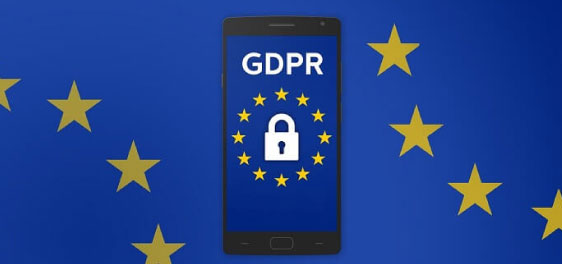Compliance & Regulation Trends 2025: How UEM Helps Enterprises Stay Ahead
out 27, 2025 | Upasna Kesarwani
Last Updated: out 28, 2025
Introduction
Enterprise compliance rules are evolving rapidly and becoming increasingly complex. From new amendments to California’s CCPA to upcoming GDPR changes in the EU and device-level rules in India, IT leaders are under pressure to ensure that every endpoint—not just servers and apps—is secure and compliant.
Unified Endpoint Management (UEM) is no longer just a convenience tool. It’s becoming a compliance essential, giving organizations the visibility, control, and automation they need to align with changing privacy laws and regulations.
The Shifting Compliance Landscape in 2025
1. California CCPA Amendments
In July 2025, the California Privacy Protection Agency finalized amendments to the CCPA regulations. These changes include:
- Annual cybersecurity audits for certain businesses.
- Mandatory risk assessments on how personal data is processed and protected.
- Regulations on automated decision-making technologies (ADMT), require transparency, consumer opt-outs, and review mechanisms.
For enterprises managing thousands of devices, this means documenting not only data practices but also automated security actions taken at the endpoint level.
2. GDPR Updates in the EU
The EU is moving toward a 2025 overhaul of GDPR that aims to:
- Ease compliance requirements for small and medium enterprises (SMEs).
- Tighten scrutiny around AI-driven profiling and automated decisions.
- Reinforce rules on cross-border data transfers, a persistent challenge for global organizations.
Companies with device fleets spanning regions must now consider where device data is stored and whether their endpoint tools comply with evolving EU standards.
3. ePrivacy Regulation Withdrawn
The long-debated ePrivacy Regulation, which was supposed to overhaul cookie and metadata rules, was officially withdrawn in early 2025. For now, enterprises will continue operating under the older ePrivacy Directive alongside GDPR.
This uncertainty means organizations must maintain flexible privacy frameworks that can adapt quickly when new proposals inevitably emerge.
4. India’s Device & Telecom Compliance Rules
India has introduced stricter rules around telecom data and mobile devices, including:
- A Mobile Number Validation Platform (MNV) requiring verification of user numbers with official telecom records.
- An IMEI tampering check for second-hand or refurbished devices, ensuring only legitimate hardware is in circulation.
For enterprises with large BYOD programs or distributed mobile fleets, this underscores the need for strong device authentication and enrollment processes.
5. Other Compliance Trends
- The European Data Protection Board (EDPB) issued the Helsinki Statement to make compliance simpler for smaller organizations through standardized templates and clearer enforcement.
- Cybersecurity insurance providers are tightening requirements, with many demanding stronger endpoint controls before offering coverage.
How UEM Bridges the Compliance Gap
Transparency in Automated Decisions
UEM provides full logs of every automated security action—whether it’s locking down a compromised device, enforcing a patch, or blocking access to corporate resources. This level of transparency aligns with ADMT requirements and gives admins the ability to review or override decisions.
Support for Cybersecurity Audits and Risk Assessments
With built-in compliance dashboards, UEM platforms can highlight device risks, missing patches, or policy violations. Scheduled reports and tamper-proof logs make it easier for enterprises to prepare for audits or demonstrate compliance readiness.
Device Tampering and IMEI Checks
By validating hardware identifiers during device enrollment, UEM helps organizations flag tampered or counterfeit devices before they enter the corporate network. This supports compliance with India’s new IMEI regulations and improves overall fleet security.
Data Localization and Cross-Border Compliance
Modern UEM solutions offer flexible deployment options—cloud hosting across multiple regions or on-premises setups—so businesses can comply with local data residency rules. End-to-end encryption further protects sensitive device and user data in transit and at rest.
Compliance Made Simple for SMEs
Pre-built compliance templates, automated policy enforcement, and one-click audit reports ensure even smaller organizations can meet regulatory requirements without adding a large compliance team.
Why UEM is Now a Compliance Essential
Compliance is no longer just about policies on paper—it’s about proving that every device, app, and action is secured and documented. As regulations increasingly focus on device-level protections and automated decision-making, enterprises need endpoint visibility and control more than ever.
UEM delivers exactly that, helping businesses not only stay compliant but also reduce risk, streamline IT operations, and strengthen cyber resilience.
Conclusion
2025 marks a turning point in compliance, with new CCPA rules, GDPR adjustments, and stricter device-level requirements in regions like India. Organizations that rely on outdated or fragmented approaches will struggle to keep up.
By adopting a modern UEM platform, enterprises can align with new laws, simplify audits, and build future-ready compliance frameworks—without sacrificing productivity.
See how SureMDM simplifies GDPR, CCPA, and device-level compliance.
Subscribe for our free newsletter








